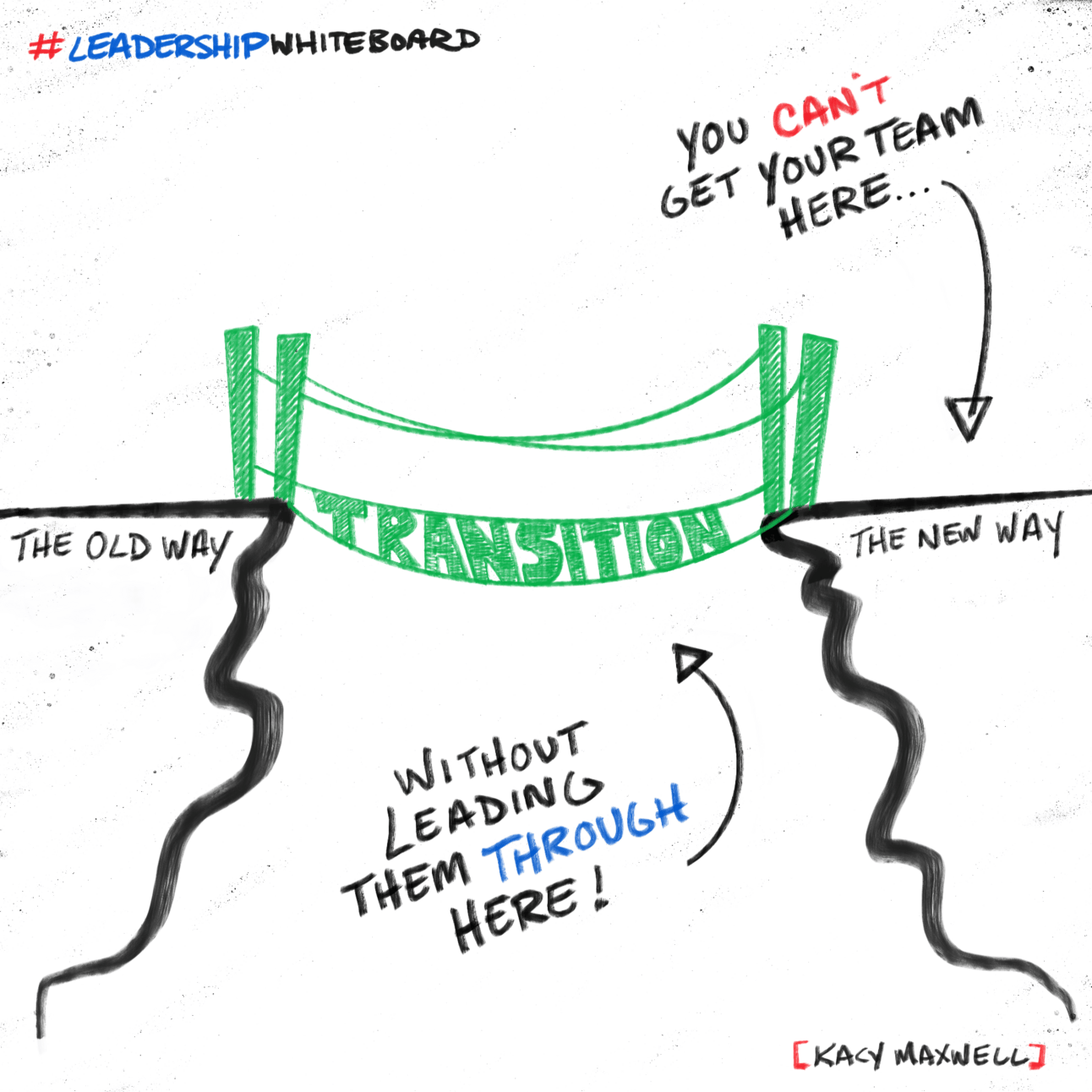- the sketchwell weekly
- Posts
- Does your team hate change?
Does your team hate change?
I’ve been reflecting on the role leaders play in guiding teams through change. Change is the one constant in business and can take many forms, both big and small. It could be a new goal, a team member joining or leaving, or even simply replacing a new technology everyone was familiar with. Whatever the change may be, it can create major issues within your team and, if not handled correctly, can destroy unity and trust. I would know... I’ve messed it up a time or two.
I used to think that people just didn’t like change. But I’ve realized that’s not necessarily true. Most people actually crave change—it’s what keeps things from getting boring. But if that’s the case, why does every little change have to be so hard?

That’s why I was so excited when I first heard about the Bridges Transition Model on Patrick Lencioni’s podcast. The model, developed by William Bridges, outlines three stages people go through during change: Ending What Currently Is, The Neutral Zone, and The New Beginning. Seeing change as these three stages has been really helpful for me to figure out what my role is in each. As leaders, it’s our responsibility to guide our teams through each of these phases—not just rush toward the outcome we want.
🧭 THE LEADER’S ROLE: A GUIDE TO CHANGE
Endings: When change happens, people are often focused on what they’re losing. Whether it’s relationships, processes, or familiar routines, it’s important to acknowledge these losses. We need to communicate clearly about what’s ending and help their teams manage these emotions.
The Neutral Zone: This is the most uncomfortable part of the transition. It’s when the old way of working is gone, but the new way isn’t fully in place. During this phase, people may feel uncertain, and it’s easy for morale to dip. As a leader, this is the time to be patient and supportive, while encouraging creativity and open-mindedness as your team adjusts.
New Beginnings: Once your team emerges from the neutral zone, they’re ready to embrace new roles and responsibilities. Your job as a leader is to provide clarity, direction, and purpose so they feel confident in their new positions and understand how they contribute to the team’s goals.

Ultimately, it’s our responsibility during times of change not to just to push forward but to support our team through these internal transitions. I’ve seen this time and time again that navigating change well creates loyalty and trust and a team that can make great things happen.
📚 DIG A LITTLE DEEPER
Navigating the Neutral Zone (podcast referenced above)
😃 A PERSONAL NOTE
One of my favorite newsletters always features a personal note from the author at the end so I am including one in each of mine moving forward. I was in a parenting class a while back where they talked about the three phases of parenting: THE COP, THE COACH and THE CONSULTANT. Right now I am making the transition from THE COP to THE COACH with my oldest daughter. And it’s hard. Really hard because you want to protect them from literally everything and it’s much easier to just tell them what they can and can’t do. But the time is coming really soon when she will be out on her own where I can’t police everything she does. And if I don’t transition to THE COACH, I won’t ever be asked to be THE CONSULTANT in the future. (There is also a lot of parallels to leading your team but will save that for another newsletter.)
Keep Leading. See you next week. 👋
Kacy
PS: If there is someone who might find this valuable, I would appreciate you forwarding it to them!